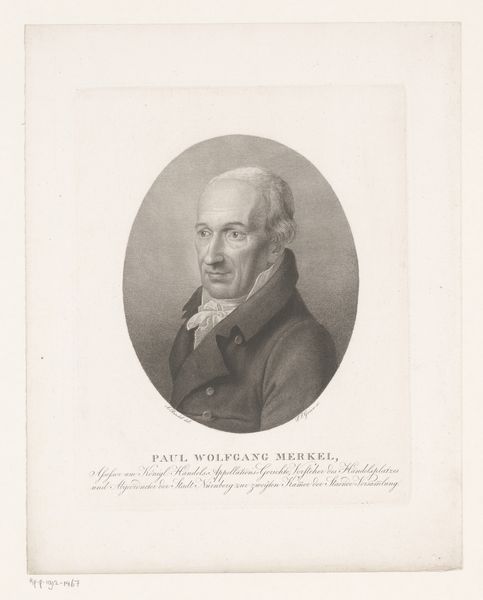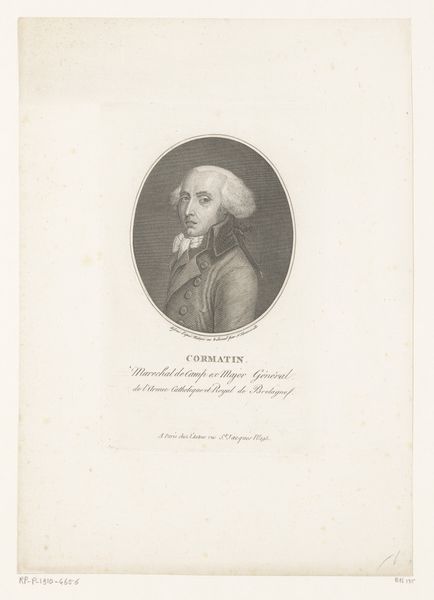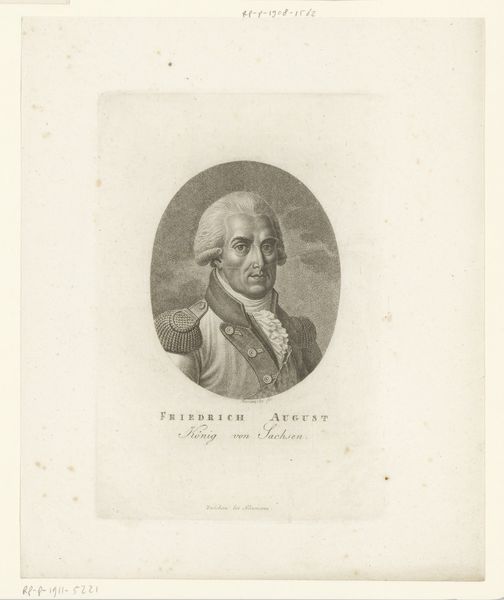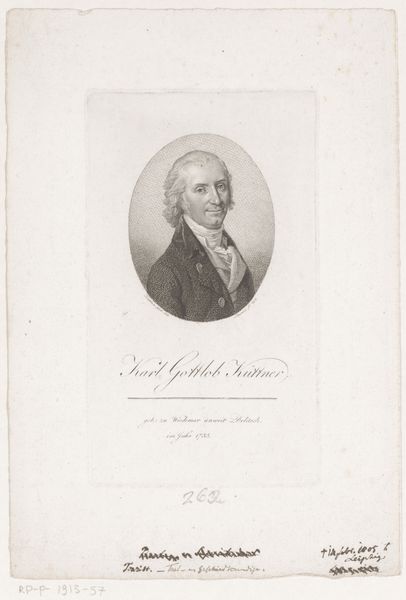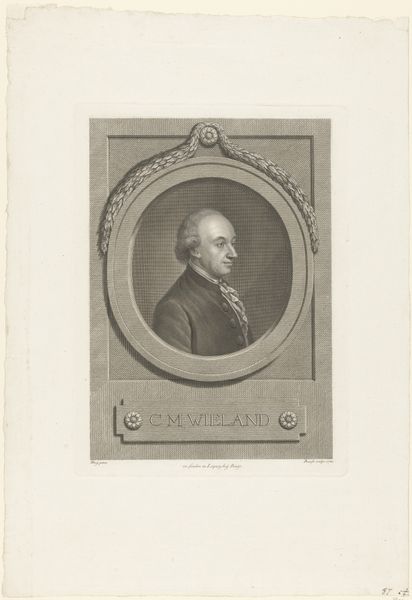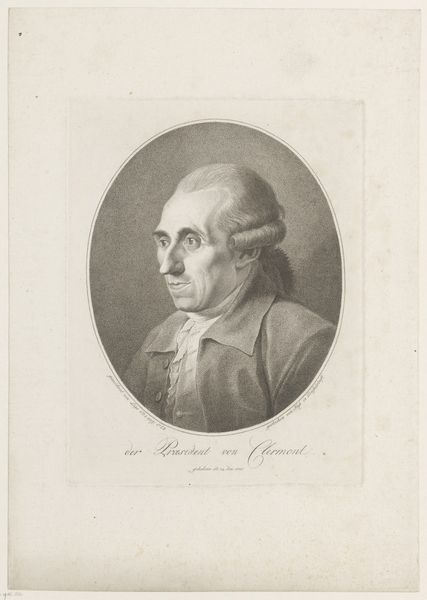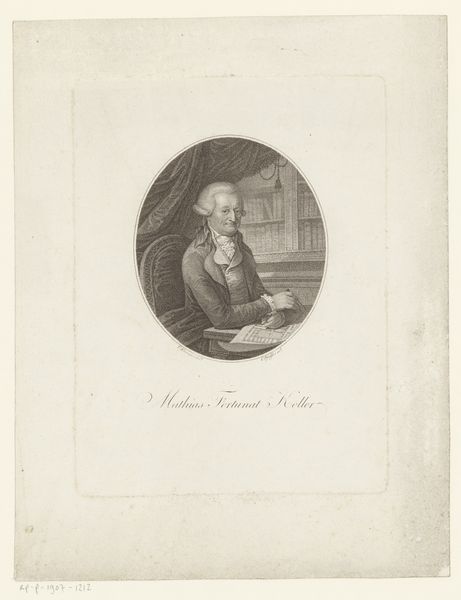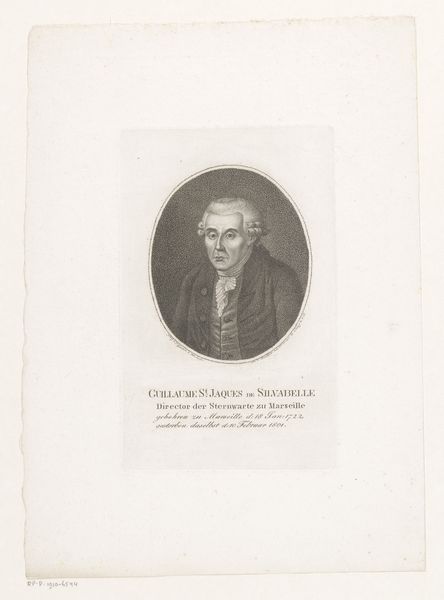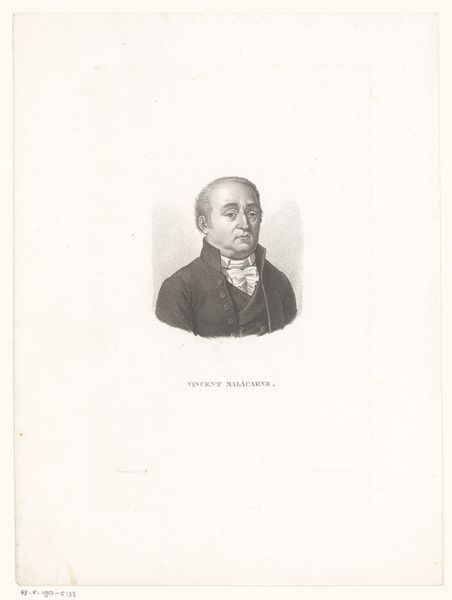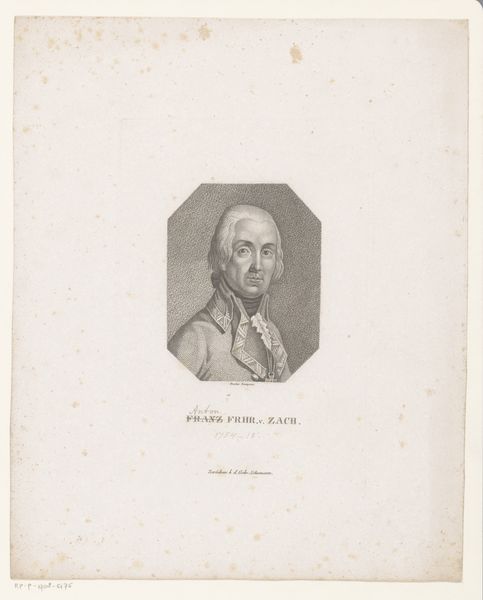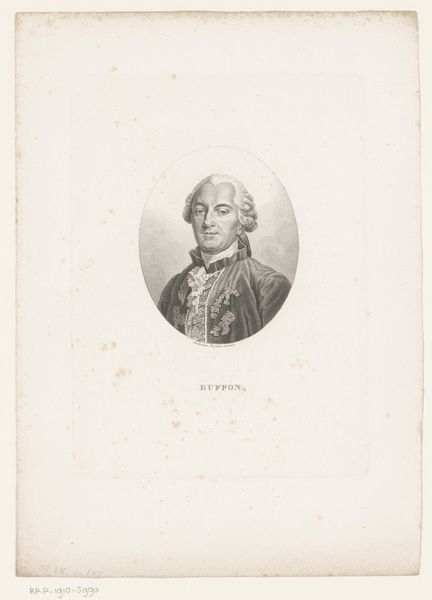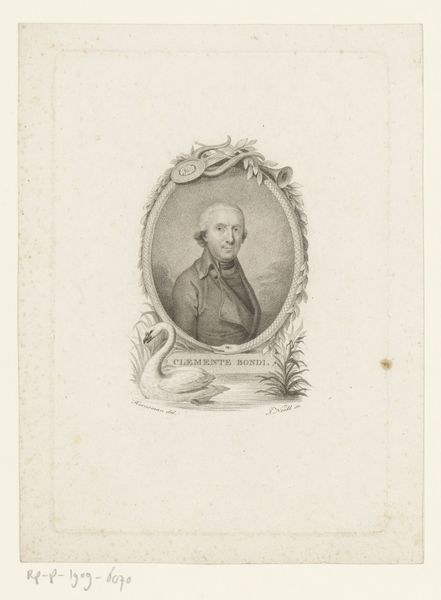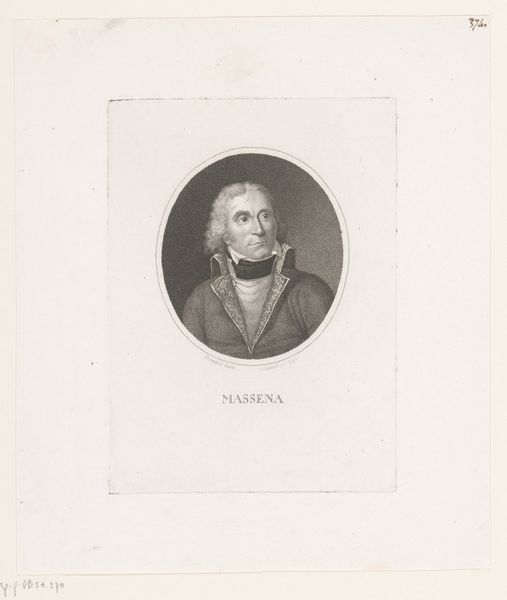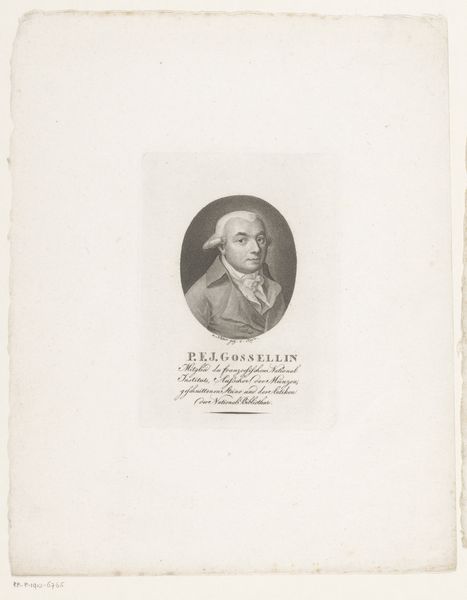
Dimensions: height 275 mm, width 228 mm
Copyright: Rijks Museum: Open Domain
Editor: So, this is "Portret van Natalis Thomas Maggi", possibly from 1788, by Francesco Bartolozzi. It’s an engraving. The details are incredible given the medium! What strikes me most is the visible labor invested in achieving such fine lines; how was this print likely created and what significance might the material choice carry? Curator: It’s vital to understand that engravings like this were a means of mass production. Copperplate engraving, the method Bartolozzi likely used, allowed for the replication of images and the wider dissemination of information and social ideals. The "fine lines" as you called them are literally etched into the copper. This skilled labor connects to the booming printing industry and rise of a certain middle class hungry for images – consider how the material properties facilitate specific functions in a given socio-economic environment. What does the Neoclassical style suggest about the consumer of this product? Editor: Hmm, so the clean lines and orderly composition probably reflect a desire for reason and control? Perhaps it indicates a certain level of affluence if someone is able to get their portrait immortalized like this? I wonder if the material and artistic decisions might also signify or even reify certain power structures? Curator: Precisely! Engravings democratized image production in one sense, yet access was still mediated by wealth and social standing. The "aged paper" is an interesting point as well. How might later viewers be impacted differently by its condition now compared to its original presentation? Editor: That's a good point. Today, we consider the material degradation over time as part of this print’s history. Whereas, originally, the clean and smooth appearance would be important. Thank you, I am starting to see it from this materialist perspective. Curator: Of course! Think about the means of production, distribution and how these materially affected audiences both then and now. The material can tell as much a story as the subject.
Comments
No comments
Be the first to comment and join the conversation on the ultimate creative platform.
